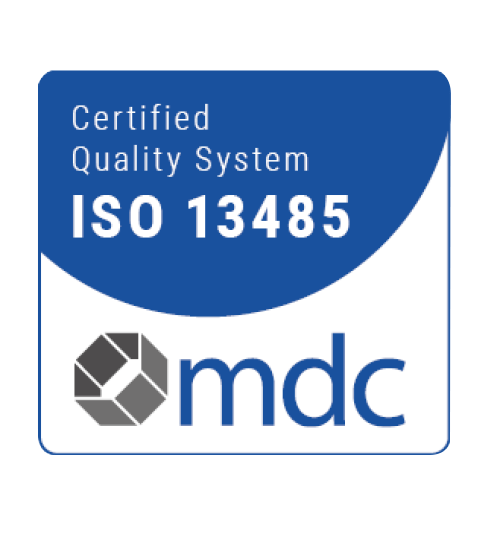
Many people want a bright, perfectly aligned smile, but getting there can be confusing. With so much information—and misinformation—available, it can be challenging to determine the truth about tooth alignment. Misunderstanding these facts can lead to poor dental health decisions and unnecessary stress. It’s not just about aesthetics; understanding the realities of teeth alignment is crucial for making informed choices. The following sections will debunk common myths and clarify the path to a healthy, confident smile:
Myth 1: Braces Are Only for Aesthetic Purposes
Many people think braces are purely for cosmetic reasons, believing their sole purpose is to improve the appearance of one’s smile. While a straighter smile is a significant benefit, braces also address functional issues. They can correct bite problems, align the jaw properly, and prevent excessive wear on teeth. Misaligned teeth can lead to serious health issues, such as gum disease, tooth decay, and even digestive problems due to improper chewing. Thus, braces play a vital role in both dental health and aesthetics. Understanding the full scope of benefits can lead to more comprehensive dental care.
Myth 2: Orthodontic Treatment Is Only for Children
Another widespread myth is that orthodontic treatment is only effective for children and teenagers. This belief overlooks that adults can also benefit significantly from orthodontic care. There has been a notable increase in adults seeking braces or aligners in recent years. The reasons vary, from correcting long standing dental issues to enhancing self-esteem and professional appearance. Advances in orthodontic technology have made it easier for adults to undergo treatment discreetly, with options like clear aligners or ceramic braces. Orthodontic care is not restricted by age, making it accessible to anyone looking to improve their dental health.
Myth 3: Over-the-Counter vs. Professional Aligners
The convenience and lower cost of over-the-counter aligners can be appealing. However, they are not a substitute for professional orthodontic care. Unlike treatments supervised by orthodontists, over-the-counter aligners do not provide personalized plans based on a comprehensive dental assessment. This lack of professional oversight can result in improper teeth movement, causing more harm than good. There is also the risk of overlooking underlying dental issues that only a trained professional can detect. Therefore, while these aligners may seem like a quick fix, they need more precision and safety of professional treatments.
Myth 4: Teeth Will Straighten Out on Their Own Over Time
Some believe that minor misalignments will resolve themselves without intervention. This myth can lead to a dangerous neglect of necessary orthodontic care. Teeth, once out of alignment, generally need to correct themselves. In fact, without treatment, the alignment can worsen over time, potentially leading to more severe dental issues. Complications from untreated misalignment include increased risk of cavities, gum disease, and difficulty in maintaining oral hygiene. Early intervention is crucial in preventing these issues and ensuring a healthy smile. Relying on natural correction is a gamble that can have long-term consequences.
Myth 5: Retainers Are Not Necessary After Braces
The common misunderstanding is that the work ends when the braces come off. In reality, the post-braces phase is critical to maintaining the results achieved. Retainers are essential in keeping the teeth in their new positions, as teeth tend to shift back to their original places over time. Neglecting to wear a retainer as instructed can undo the progress made during the orthodontic treatment. This stage requires consistently wearing the retainer, ensuring the treatment results’ longevity. Understanding this necessity can prevent future dental alignment issues.
Myth 6: Braces Are Painful and Inconvenient
The idea of braces often conjures up images of pain and discomfort. While it’s true that adjusting to braces can cause some discomfort, advancements in orthodontic technology have made treatments more comfortable than ever. Modern braces are less bulky and more efficient, reducing treatment time and discomfort. Many patients find discomfort temporary and manageable with simple pain relief methods. The long-term benefits of having a well-aligned set of teeth far outweigh the short-term inconvenience. Overcoming this fear can lead to better dental health and confidence.
Myth 7: Braces Are Too Expensive for the Average Person
Cost is a significant concern for many considering braces, with a common perception that they are unaffordable. However, there are numerous options to make orthodontic care accessible. Many dental practices offer flexible payment plans and financing options. Additionally, insurance often covers a portion of the treatment cost, especially if the braces are deemed medically necessary. Some clinics provide sliding scale fees based on income, making accessing care more manageable for those with limited budgets. Investing in orthodontic treatment can prevent future dental issues, saving money in the long run.
Myth 8: Braces Weaken Teeth
Some believe that braces can weaken teeth and roots, leading to potential long-term damage. However, this myth is unfounded. Orthodontic treatment is carefully planned and executed to move teeth safely within the bone structure. The controlled forces applied during treatment gradually reposition teeth without causing harm. With proper care and regular dental check-ups, the risk of damage is minimal. Following orthodontist recommendations for maintaining healthy teeth throughout the treatment is essential.
Myth 9: Braces Cause Permanent Damage to the Teeth
A common concern is that braces can cause permanent damage, such as tooth decay or enamel erosion. While it’s true that maintaining oral hygiene can be more challenging with braces, proper care prevents these issues. Braces do not cause damage, but neglecting dental hygiene can lead to problems. Brushing, flossing, and regular visits to the dentist are crucial for keeping teeth healthy during treatment. Patients can avoid any adverse effects and enjoy a successful outcome with diligence.
Myth 10: Metal Braces Are the Only Option
Many people still believe that traditional metal braces are the only choice for orthodontic treatment. That is far from the truth. Advances in orthodontics have introduced various alternatives, such as ceramic braces, lingual braces (placed behind the teeth), and clear aligners like Invisalign. These options offer more discreet ways to straighten teeth, catering to different aesthetic preferences and lifestyle needs. Patients can choose the type of treatment that best suits their situation, ensuring comfort and effectiveness.
Myth 11: Braces Are Always Noticeable
The fear of noticeable braces often deters people from seeking treatment. However, several modern orthodontic options are designed to be less visible. Clear aligners, ceramic braces, and even lingual braces provide effective treatment with minimal visual impact. These alternatives are prevalent among adults who prefer a more subtle approach. The advancements in materials and technology have made orthodontic treatment more versatile, allowing patients to maintain a professional appearance while undergoing treatment.
Myth 12: Treatment Takes Many Years
There is a misconception that orthodontic treatment always takes several years to complete. While some complex cases may require extended treatment, many can be addressed quickly. Modern techniques and materials, such as accelerated orthodontics, can shorten treatment duration. The specific timeline depends on the individual’s needs and the severity of the alignment issues. Consulting with an orthodontist can provide a more accurate estimate of treatment length, ensuring realistic expectations.
Myth 13: You Can’t Eat Normally With Braces
Another common myth is that braces severely restrict dietary choices. While it’s true that some foods should be avoided to protect the braces and teeth—such as sticky, hard, or chewy items—there is still a wide variety of foods you can enjoy. It’s all about making intelligent choices and being cautious with food textures. Orthodontists guide what to eat and avoid, helping patients navigate their dietary habits during treatment without feeling deprived.
Myth 14: Braces and Playing Sports or Instruments
Some worry that wearing braces means giving up sports or playing musical instruments. However, braces do not prevent participation in these activities. Using a custom mouthguard can protect the braces and teeth from injury for sports. There might be an adjustment period for musicians, particularly those playing wind instruments, but most adapt quickly. Orthodontists can provide tips and solutions to make these adjustments easier, ensuring braces do not interfere with hobbies and interests.
Dispelling these myths helps individuals take proactive steps toward achieving and maintaining a healthy smile. However, consulting with qualified orthodontic professionals who can provide accurate information and guide you through the process is always advisable.
Preventive Orthodontic Measures and Oral Hygiene Tip
Maintaining optimal oral hygiene is crucial during and after orthodontic treatment. Proper care ensures the success of the treatment and prevents complications such as cavities and gum disease. Here are essential preventive measures and tips for maintaining good oral hygiene:
Regular Brushing and Flossing
Brushing and flossing are the cornerstones of oral hygiene. When wearing braces, food particles and plaque can easily get trapped around brackets and wires, increasing the risk of tooth decay. To prevent this:
Brush After Every Meal
Use a soft-bristled toothbrush and fluoride toothpaste. Pay special attention to cleaning around brackets, wires, and under the gums.
Use An Interdental Brush
This small, bristled tool helps clean between braces and teeth, reaching areas a regular toothbrush might miss.
Floss Daily
Flossing can be challenging with braces, but it’s essential. Consider using a floss threader or orthodontic floss, which is designed to navigate around braces.
Rinsing With Mouthwash
An antibacterial mouthwash can help reduce the risk of gum disease and freshen your breath. Look for a mouthwash containing fluoride to strengthen tooth enamel. Rinse for at least 30 seconds, especially after brushing and flossing, to help remove any remaining particles.
Maintaining a Balanced Diet
Your diet plays a significant role in oral health. While undergoing orthodontic treatment, avoiding foods that can damage braces or cause tooth decay is crucial. Some tips include:
Avoid Sticky and Chewy Foods
Candies, caramel, and gum can stick to braces and are challenging to clean.
Avoid Hard Foods
Nuts, popcorn, and ice can break brackets and wires. Cut hard fruits and vegetables into smaller pieces to make them easier to eat.
Limit Sugary Foods and Drinks
Excessive sugar can lead to plaque buildup and tooth decay. If you consume sugary items, rinse your mouth with water afterward and brush as soon as possible.
Regular Dental Check-ups
Regular visits to your dentist and orthodontist are essential. These professionals can:
Monitor Your Progress
Ensure that your teeth are moving as planned and make any necessary adjustments.
Perform Professional Cleanings
Regular cleanings help remove plaque and tartar that may have accumulated despite diligent brushing and flossing.
Check for Issues
Early detection of potential problems, such as gum disease or tooth decay, allows prompt treatment.
Using Orthodontic Wax
Braces can sometimes cause discomfort by rubbing against the inside of your lips or cheeks. Orthodontic wax is a simple solution to protect these areas:
Apply Wax to Trouble Spots
Roll a small piece between your fingers to soften it, then place it over any brackets or wires that irritate you.
Replace As Needed
Wax can wear away or fall off, so it’s good to have some handy to reapply when necessary.
Mouthguards for Sports
If you participate in sports, wearing a mouthguard is essential to protect your teeth and braces from injury. Specially designed orthodontic mouthguards fit comfortably over braces and provide the necessary protection.
These preventive measures and oral hygiene tips can help patients ensure that their orthodontic treatment progresses smoothly and maintains a healthy smile. Proper care during this time enhances the treatment’s effectiveness and contributes to long-term oral health.
The Path to a Confident, Healthy Smile
Embracing the journey to a well-aligned smile is more than just a cosmetic choice—a commitment to overall well-being and self-confidence. Dispelling myths and understanding the real benefits of orthodontic care can transform your appearance and quality of life. Consulting with a skilled orthodontist is the first step in this transformation. They are not just specialists in aligning teeth but partners in your journey toward a healthier, more confident future. Consider taking the plunge and discovering how much of a difference professional guidance can make.
Explore more insights and expert tips on our FirstClass Aligners blog, and learn how to achieve your best smile with professional orthodontic care.






